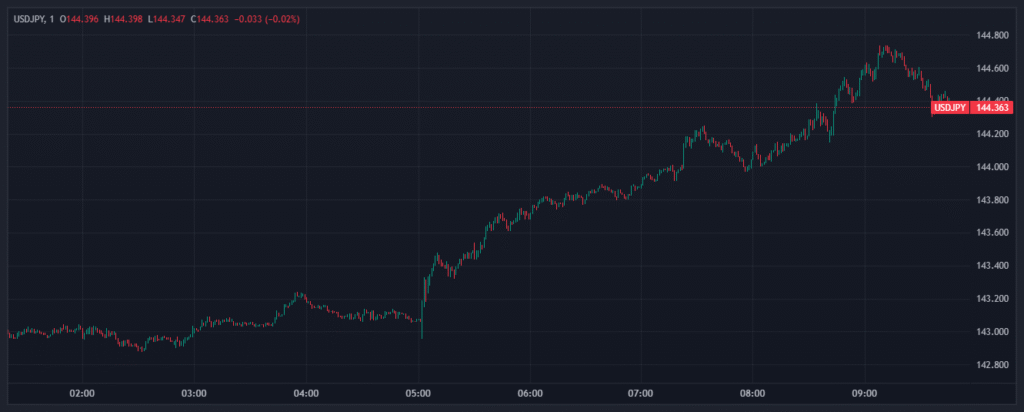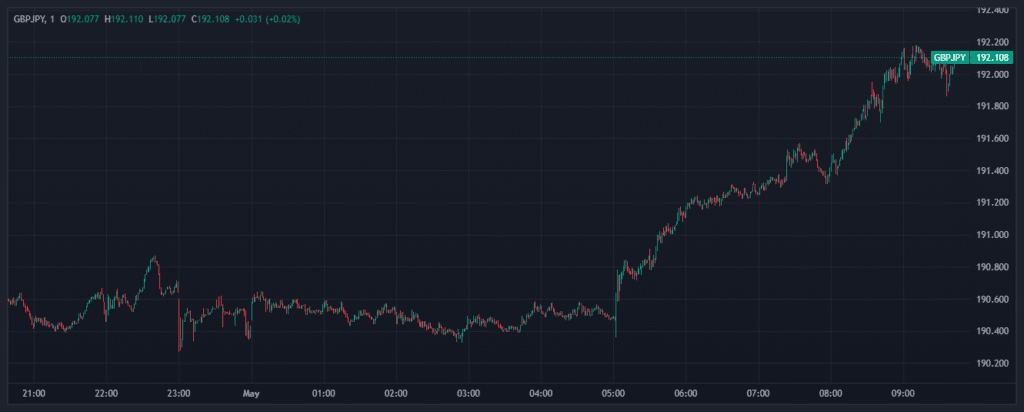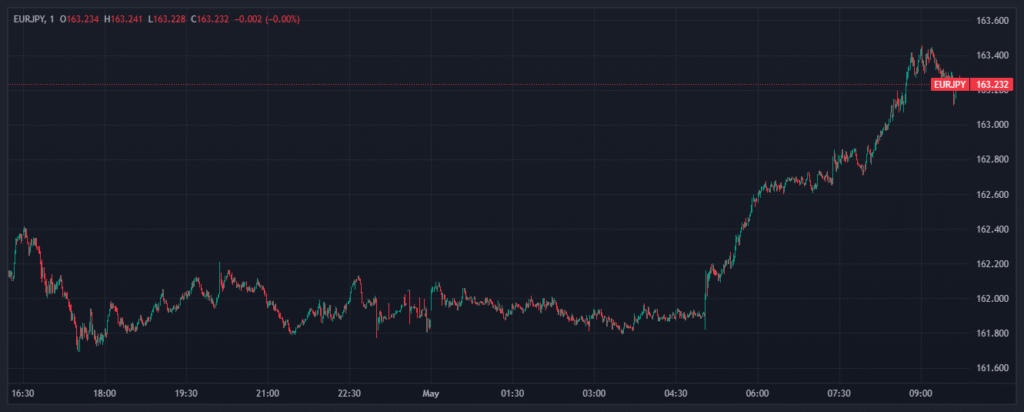The Bank of Japan (BOJ) announced its monetary policy decision, keeping its benchmark interest rate unchanged at 0.5%. This was widely expected as the central bank continues to prioritize economic stability amidst global uncertainties. The decision had an immediate impact on the Japanese yen (JPY), which depreciated against major currencies. Alongside the rate policy, the BOJ also revised its growth and inflation outlooks, reflecting softer economic conditions. This stance has fueled further concerns about the yen’s performance and the likelihood of prolonged monetary easing. Market participants remain focused on how these developments will shape global currency dynamics.
Table of Contents
ToggleBOJ Monetary Policy and Economic Outlook
The Bank of Japan’s decision to maintain its interest rate at 0.5% reflects a cautious stance amid economic turbulence. The central bank highlighted risks stemming from global trade uncertainties, particularly related to U.S.-China tariff policies. Governor Kazuo Ueda reiterated that sustainable inflationary momentum remains elusive, delaying any significant policy shifts. He emphasized that monetary tightening would only proceed if economic conditions and prices align with projections.
The BOJ revised downward its GDP growth forecast and core inflation projections. The central bank now expects core Consumer Price Index (CPI) inflation for 2026 to reach 1.7%, down from the previous 2% estimate. Although the anticipated medium-term inflation trajectory suggests alignment with the 2% target, the current revision underscores persistent economic challenges. Lower-than-expected manufacturing activity and weakening domestic consumption also raise doubts about the pace of recovery, keeping future rate hikes off the table.
Yen Weakness and Initial Market Reaction
Following the BOJ announcement, the Japanese yen saw significant depreciation against the U.S. dollar and other key currencies. The USD/JPY pair advanced above 144.00, reaching its highest level in three weeks. The yen’s weakness comes as markets price in prolonged monetary easing, alongside the BOJ’s tempered expectations for inflation.
The yen’s decline is also tied to improving risk sentiment globally. Optimism surrounding U.S.-China trade negotiations and modest growth in U.S. manufacturing activity have bolstered higher-yielding assets at the expense of safe-haven currencies like the yen. Still, the yen’s performance will likely depend on further developments in Japan’s economic data and its correlation with external trade dynamics.
USD/JPY
The USD/JPY breached the 144.00 level following the BOJ’s decision. Technical indicators suggest a bullish outlook, with the next significant resistance near 145.00. On the downside, immediate support lies at 142.60, which may limit short-term declines. Momentum remains positive, but a sustained break above 145.00 is needed for stronger bullish confirmation.

GBP/JPY
GBP/JPY currently trades at 192.083, showcasing strong upward momentum supported by yen weakness and stable U.K. sentiment. The pair is approaching a key resistance level at 192.80, with further potential to test the 193.50 region if bullish conditions persist. On the downside, initial support lies near 191.20, providing a cushion against pullbacks.
This upward trajectory reflects sustained demand for high-yielding currencies amid global risk appetite and a lack of hawkish signals from the BOJ. However, further gains could be influenced by upcoming U.K. economic indicators, including growth and inflation data. For now, the pair’s outlook remains tilted towards further appreciation.

EUR/JPY
EUR/JPY currently trades at 163.277, reflecting continued yen weakness following the dovish BOJ stance. The pair is approaching a significant resistance level near 163.80, with potential to test 164.50 if bullish momentum persists. Support is established around 162.50, providing a possible base for any near-term pullbacks.
Momentum in EUR/JPY remains steady as eurozone economic resilience and global risk appetite support demand for the euro. However, upward movement could face headwinds if upcoming eurozone data, such as growth or inflation figures, fall short of expectations. Continued strength in risk-on sentiment would likely favor further upward movement in the pair.

The Outlook
The Bank of Japan’s unchanged monetary policy underscores its cautious approach in managing economic risks. The focus remains on achieving sustainable inflation without rushing to tighten. However, the yen’s consistent depreciation across major pairs raises questions about the effectiveness of prolonged easing. Global events will continue to shape the trajectory of Japan’s currency and monetary stance.
Disclaimer:
All information has been prepared by TraderFactor or partners. The information does not contain a record of TraderFactor or partner’s prices or an offer of or solicitation for a transaction in any financial instrument. No representation or warranty is given as to the accuracy or completeness of this information. Any material provided does not have regard to the specific investment objective and financial situation of any person who may read it. Past performance is not a reliable indicator of future performance.

















